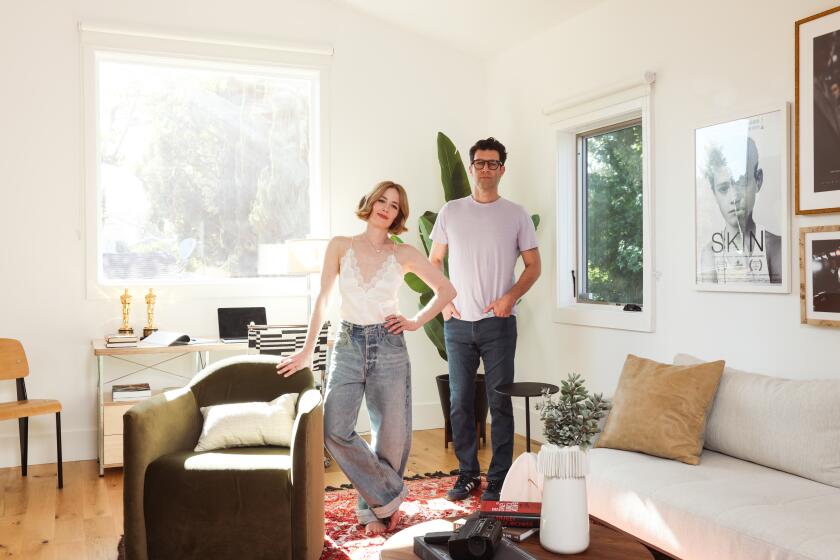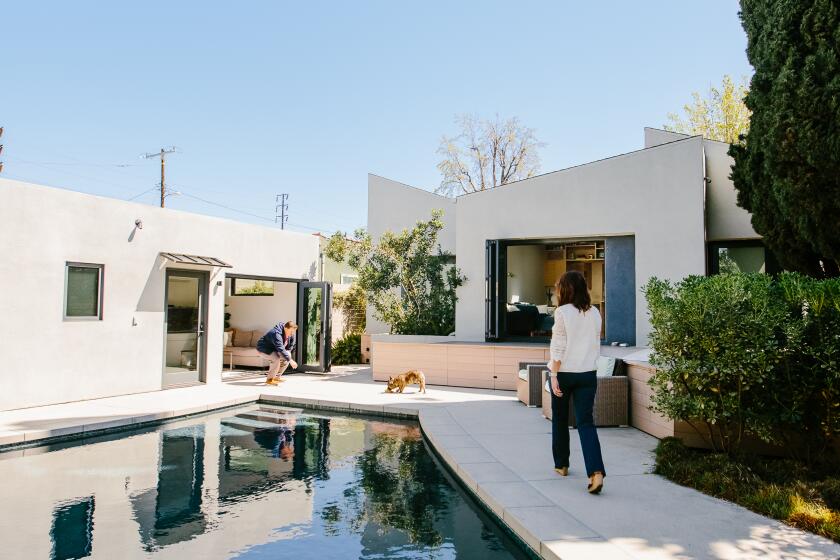Milestone Mo-tel, California’s first motel, was a landmark design
Once upon a time in Fourth-of-July America, when gas was cheap and highways were empty, Mom, Dad and the family headed out for summer vacation. Packing the Ford the night before, they left at dawn, rolling over dusty valley roads to Santa Barbara. They might have stopped for lunch, some culture at the historic mission and an ice cream cone, and then they were back on the road to San Luis Obispo. As the sun tipped over the ocean horizon, Dad turned off Highway 1, the Camino Real. He rumbled along a country lane to the Milestone Mo-tel, the first of its kind in California.
Pasadena real estate developer, architect and businessman Arthur S. Heineman cooked up the roadside home-away-from-home in 1925, coining the word “motel” from “motor” and “hotel.” He understood a changing world. The automobile was replacing travel by train and bus, making the city hotel and rural resort old-fashioned. Why stay downtown with no place to park when you could be a modern pioneer exploring anew the wild, wild West? In the decade prior there had been auto camps with tents and crumbling cottages in mining towns, but modern Americans wanted places to rest that were easy to reach, easy to leave, clean and affordable. A restless urban society freed from the grind back on the farm savored its freedom.
Heineman and his investors knew their customer. They took the model of the modest bungalow court developed in Pasadena and transferred it to the roadside hotel, halfway between Los Angeles and San Francisco. They built six bungalows for four to five people each and apartments for one to three guests. Extra kids slept on fold-out cots.
Each unit had a locked garage and the basics of the modern house: hot and cold water, fire-resistant construction and heating in the winter. To the rear were a public kitchen, a laundry, drying yard and playground. A lobby, dancing pavilion and dining room were along the street. The amenities included one phone and a radio. Affordable at $1.50 to $3 a day, the motel had the comforts of a first-class hotel without tips to bellhops and doormen. The idea that the middle-class deserved a slice of the American pie was still alive and well in 1925.
Catching the eye of the weary traveler was key to motel success. In the land of the padres, church bells, caballeros and rancheros, what better way to draw the attention of travelers than the vision of a modern-day mission, a miniature of what arriving guests might have just visited on the way from L.A.? Heineman housed the public rooms in white stucco buildings with red tile roofs. He built a tower inspired by the Santa Barbara mission and an arcade that emulated the nearby Mission San Luis Obispo. Red peppers hung from wood beams, and waitresses in Mexican dress served homey food. Cars were “gasoline horses” and garages “auto stables.”
Heineman’s original plan was for 18 motels from San Diego to Seattle, about 150 to 200 miles apart, much like how the original missions were spaced a day’s horseback ride from one another. But then came the 1929 Depression, and Heineman waved goodbye to his dream.
Motels’ image of clean fun also took a hit in the Bonnie and Clyde decade that followed. By 1940, FBI Director J. Edgar Hoover, no saint himself, tagged motels “assignation camps” harboring gangland crime, corruption, wife-beating and wife-cheating. “Psycho” director Alfred Hitchcock didn’t help when he had Tony Perkins slash Janet Leigh in a shower at the Bates Motel.
The Milestone Mo-tel was in business until 1991. Today, only the tower and one wing survive, tourist mementos owned by the country-themed Apple Farm Inn. Too bad for reputed mob boss James “Whitey” Bulger, recently apprehended at a Santa Monica apartment building. If he’d had a cozy little bungalow, he and his moll might still be on the lam.
Sign up for Essential California
The most important California stories and recommendations in your inbox every morning.
You may occasionally receive promotional content from the Los Angeles Times.



